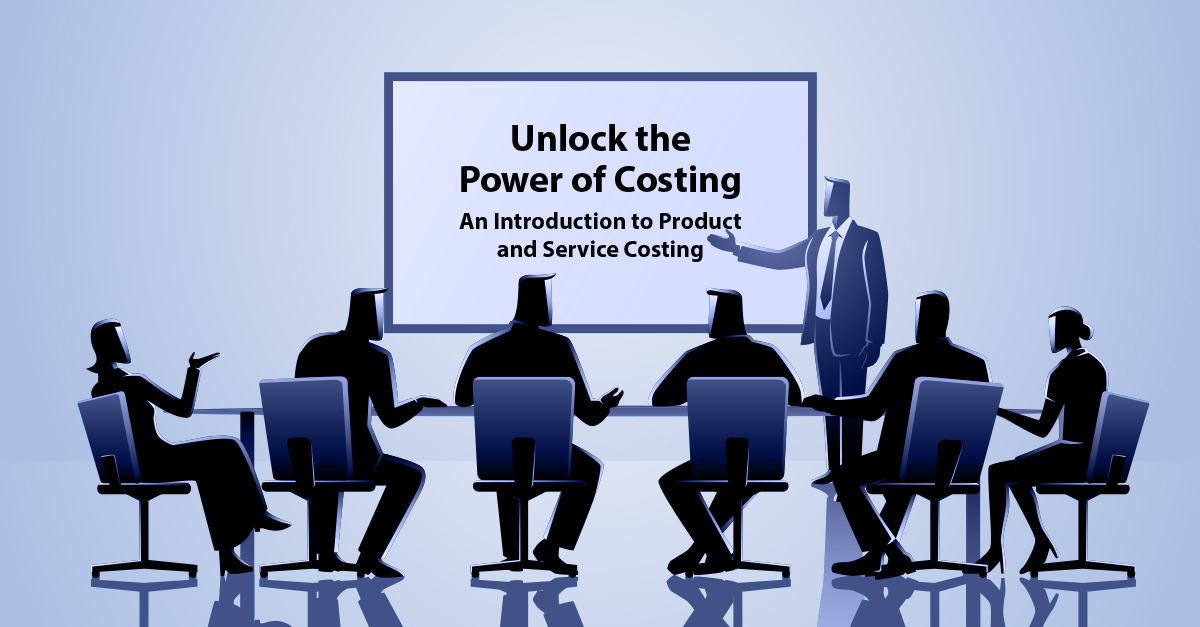What is Costing?
First, we may ask what is costing? In a business every time a product (defined as a product or service or both) is delivered to a customer there is a cost for that product. The cost may be formally defined and measured by a costing system, or it may be totally undefined. Regardless, “costing” is still in play and is a critical component to any business.
In the end, in simplest terms, a business will succeed if the total of its revenues exceeds the total of its costs. While the prior statement seems so simple that most are now wondering if they should read on further, it’s never as simple as it seems. The dilemma and challenge lie in the definition of “in the end”, and how to measure and record the total revenues and costs at any particular point in time, so that the judgement regarding success is clear.
Some examples help. Take your average startup, and look at their Income statement bottom line or net income and what do we see? Years of negative numbers. Clearly, they are either a failure or more likely, “in the end” has not yet arrived. Take your average business and compute the net income, daily for three days. Day one was -100, day 2 plus 40, and day 3 plus 75. Does any one day tell you anything? Does 3?
Why you Need a Costing System
The only way to determine what the answer will be “in the end” is to understand what the cost of an individual product actually is (or will be at some point in time) and by summing those costs up across the mix of what you expect to sell (at your expected price) and then determine that if “in the end” you will be plus or minus.
In the words of one of my clients, “Why does this have to be so complicated? I hired you to make this simple.” And sometimes it is; take the broker who identifies a customer need, finds a willing supplier and gets a price, marks up that price, and has the supplier ship it prepaid to customer. Price is simple and cost is simple. And that business sustains itself until the pressured purchasing agent on the other side starts buying direct as our broker has minimal sustainable competitive advantage or value added.
Advantages that Drive Costing
There are actually several strategic advantages that lead you to the most profitable businesses:
- The producer has advantages in purchasing power or proprietary access to raw ingredients.
- The producer has advantages of scale where resources critical to the production of the product (or delivery of the service, last time I will repeat that!) are shared across multiple products.
- The producer has advantages of technology or experience where cumulative experience makes them more productive than others.
- The producer has network advantages where there are external costs to buying competitive products, and these outweigh any price premium the producer may charge.
As we will delve deeper into in subsequent articles dealing with practical costing challenges and complexities, it always seems to me that every one of these advantages makes the calculation of “what does it cost” a little more difficult and complex. Fortunately, in costing it is not always imperative to be exactly right, just to be close enough to make good business decisions.
Costing Systems and How They Work
Turning now to the idea of a costing system, we can ask how does all this work? Costing systems, in the present day, are typically computerized software packages integrated into a company’s enterprise software. But they are fancy tools that total up all the inputs required to make a product. For a manufacturer this includes materials you buy, space you rent, utilities you pay to run your machines and heat the building, wages and so on and so on. For services it can include tangible items such as material and supplies, and typically includes a significant cost from a service person. However, not always! We are all pretty familiar with SAAS (software as a service) which in most cases involves no service person once past an early installation phase.
In general, there are 2 costing methods – actual costing or standard costing. Actual costing attempts to record the cost of every cost applied to the product based on the actual hours of labor times the actual cost per hour of that labor plus the actual material used (both the right amount used and any wasted), and sometimes as specific as the certain LOT of a material. Actual costing in any volume requires either an army of clerks, or a good IT system, and very disciplined entry of actual data into the computer system. In best-in-class actual cost systems you will see ubiquitous bar code scanners, RFID identification systems, and employees swiping in and out of workstations.
Standard costing systems are structured around what the product SHOULD cost. Deviations to performance to these standards are measured and adjusted periodically. You may see some of the same information gathering technology but the data collected is measured against the standard versus simply collected and totaled.
There are pluses and minuses to either approach which will also be addressed in a later article. In the implementation of both, the same issues, complexities and general principles apply; these are covered in the remainder of our series.
Are you ready to learn how a Fractional CFO can help you master costing for your business? Schedule Your Complimentary Consultation Today!
Dive into the World of Business Costs - Explore More:
- An Introduction to Product and Service Costing (current)
- 10 Reasons Why Costing Is Important
- Three Core Concepts in Building a Costing Model
- Practical Costing Situations & Concepts: 4 Cases
- Hands on Guide to Cost Modeling
Todd Peter is a Fractional CFO with FocusCFO, based in Cleveland.






